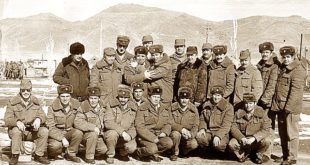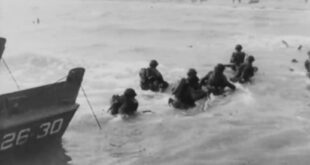In the opening weeks of Russia’s invasion of Ukraine, a handful of Soviet flags flown from Russian tanks were documented in amateur footage. But a recent surge in professional photos of Soviet symbols released through Kremlin-funded media indicates a possible widespread embrace of the aesthetic among Russia’s military.
Ian Garner, a historian and expert of Russian war propaganda, says the adoption of Soviet imagery is largely the initiative of individual soldiers and units but it’s being implicitly encouraged through recent Kremlin-funded “propaganda events like concerts, television shows, and so forth.”
Garner believes Soviet symbols have been embraced partly as a rallying point for an invasion whose goals have become increasingly unclear.
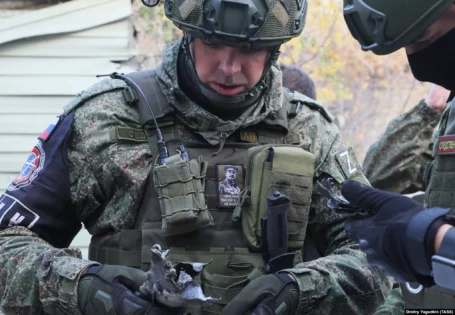
A military investigator wears a patch featuring Josef Stalin and the words, “When I was in power this s*** didn’t happen.” Photo by TASS.
“Even though individual soldiers may not identify with the state’s claimed goals for war or be able to describe the geopolitical aims or national security strategies that the [Putin] regime lays out,” Garner said.
“They bond around these sorts of aesthetics, the aesthetics of the past that reach towards the creation of a supposedly utopian future in which Russia will be a great power once again.”
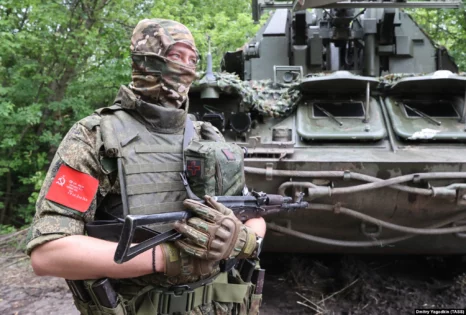
Garner does not believe the Soviet imagery indicates a goal of literally resurrecting the Marxist political system that destroyed countless Russian lives through the 20th century.
“I would say that very few people in Russia really want to restore the Soviet Union,” he said.
Recent polls have indicated more Russians identify with the long-dead Soviet Union than with independent Russia. But Garner points to the incongruous appearance of both Tsarist-era and communist symbols seen together on the battlefield in Ukraine as indication that Soviet imagery is nothing more than a symbol of a former era.
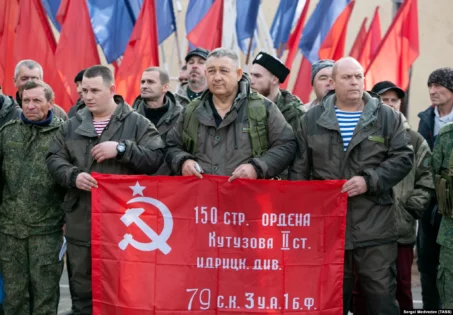
Russian soldiers as they prepare to leave Orenburg, Russia, in October 2022
“None of it makes sense unless you understand that it is a politically incoherent expression of a desire to go back to a better time,” the historian says. “But of course, we’re talking about a better time that never really actually existed.”
– Amos Chapple, RFE/RL. Chapple is a New Zealand-born photographer and picture researcher with a particular interest in the former U.S.S.R. Follow his tweets, [email protected].
 Soldier of Fortune Magazine The Journal of Professional Adventurers
Soldier of Fortune Magazine The Journal of Professional Adventurers




